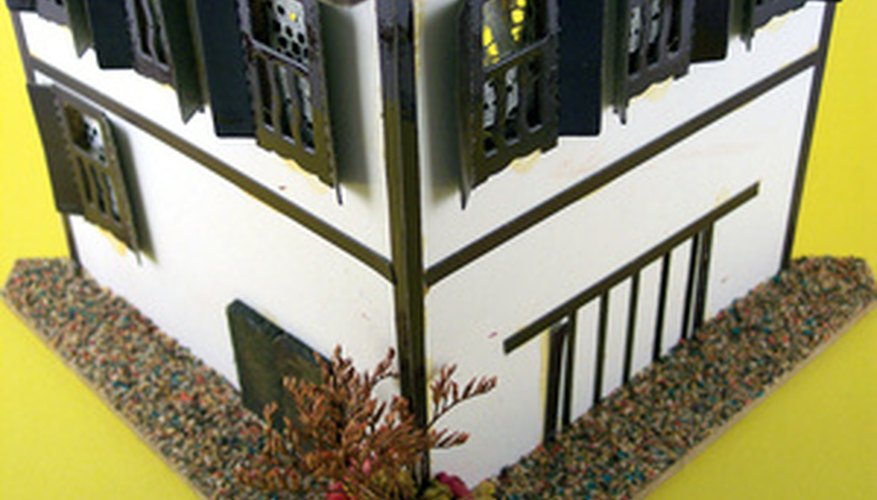Balsa wood is a common material used by builders to create models of structures, such as houses and commercial buildings. It is lightweight, easy to cut and relatively inexpensive. The downside is that it also is easy to break and will show a wood grain if not properly primed or covered before painting. Each project will be different, so the process described here is general and might benefit from modification depending on the goals of the model builder and the desired level of detail.
Cut a section of foam core board or extruded polystyrene insulation as a base for the model house. Extruded polystyrene insulation is better for a stand alone model because it is thicker. Foam core works better if you plan to place the model into a diorama or model railroad.
- Balsa wood is a common material used by builders to create models of structures, such as houses and commercial buildings.
- Extruded polystyrene insulation is better for a stand alone model because it is thicker.
Decide what scale the house will be to determine the size of the walls. In the real world, each story of a house is typically about 144 inches tall. Divide that number by the scale denominator to get the model dimensions for height, as a baseline.
Mark the dimensions of each wall, on balsa wood, using a ruler and pencil. Mark the spots for windows and doors, as well.
- Decide what scale the house will be to determine the size of the walls.
- Mark the dimensions of each wall, on balsa wood, using a ruler and pencil.
Cut along the marked sections using a hobby knife. Be sure to use the straight edge of the ruler as a guide.
Mark the outer edges of the house structure on your base.
Push two or three straight pins through the foam along each baseline, and invert the foam so that the sharp edges of the pins stick out. These will add support during construction.
Slide two adjoining walls down over the straight pins, slowly. Adjust as necessary, so that the walls meet at a right angle.
Apply a thin line of white glue along the point where the walls meet, and position a balsa strip at the intersection to provide support. Allow the glue to dry before proceeding.
- Mark the outer edges of the house structure on your base.
- Apply a thin line of white glue along the point where the walls meet, and position a balsa strip at the intersection to provide support.
Repeat this process until all walls are in place.
Apply a thin line of white glue to the tops of the walls, then apply sheets of balsa for the roof. These can be secured using straight pins, if necessary.
TIP
Determining scale is simply a matter of division. For example, HO scale is 1/87 the size of real world objects. To get a scale story of a house, divide 144 inches by 87 to get 1.655 inches. Make sure you use consistent units of measurement to determine scale. Do not mix meters and inches or meters and centimetres. Allow adequate time for glue to dry between steps. A layer of primer or a thin layer of plaster can help disguise any wood grain, though with balsa, this is generally minimal. Windows can be created with plastic sheeting reclaimed from blister packaging.
